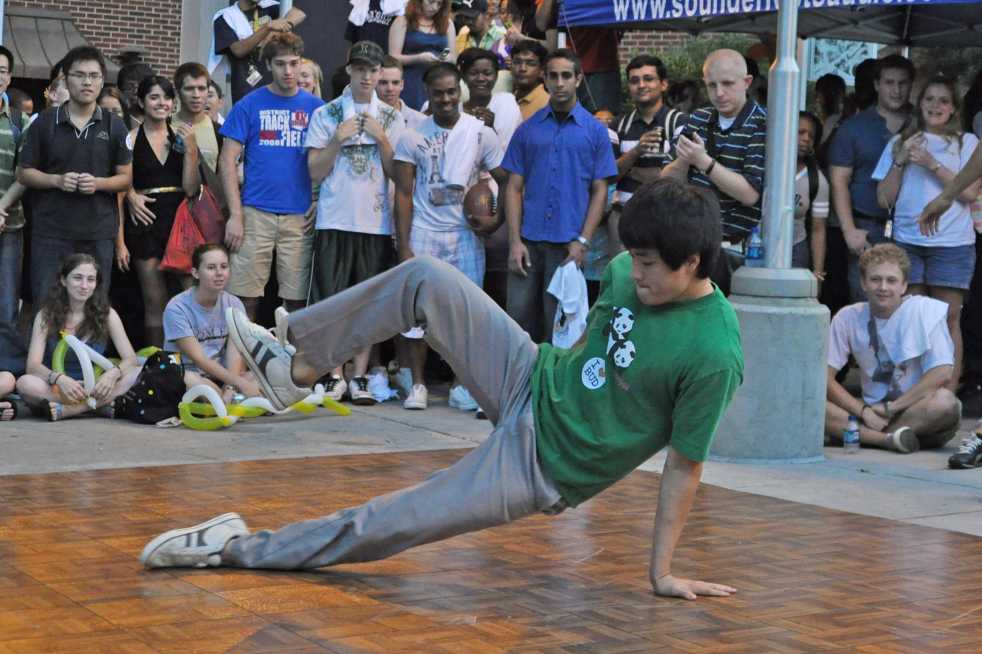It’s Saturday night. With thumping electronic music in the background, three boys, arms crossed and hips cocked to one side, stand in the corner scrolling through a Powerpoint, while another boy and a girl take over the carpet-turned-dance-floor, throwing in a pull of the girl through the boys’ legs and ending with a grandiose dip.
At the back of Brittain Rec, the door opens and shuts as other people continuously stream in and out. Everyone is laid back, and all is hakuna matata. This is the breakdancer life.
Breakdancing, or b-boying/b-girling, is a style of dance that originated in the streets of New York. Nowadays, breakdancing has been commercialized for awestruck Hollywood audiences, and battles replayed on YouTube by idolizing teens, but the representation of b-boys on the Tech campus remains small.
“Breakdancing is something most find ‘cool’ but at the same time unapproachable. For that reason, many who are legitimately interested in the art that is breakdancing are almost scared to join that which they believe to have a high learning curve,” said Mahdi Al Husseini, a first-year BMED major and president of Howell, Harrison and Cloudman’s (HHC) hall council.
Because of his beliefs on students being tentative over breakdancing, Husseini invited the Tech Breakdancing group Tekstyles to teach HHC residents a little more about the art of dance.
“[Tekstyles’] goal is to promote Tech Hip-Hop by providing an environment to learn and develop dancing. This dancing includes all genres: breaking, house, crumping, etc.” said Clarence Chang, a third-year ISyE major and Vice President of Tekstyles.
To begin, the b-boys and single b-girl gave students a glimpse of the breakdancer atmosphere. Students who arrived promptly at 6 p.m. were met with 15 minutes of freestyling, during which spectators and new students looked confused and out of place.
Most of the b-boyers learned techniques from varied sources, and the breakdancing community is largely based on picking up skills by observation. As such, the dancers often know different moves under the same name, and vice versa. The “Indian step,” for one, means something entirely different from dancer to dancer.
This disparity, along with the facts that some students pick up footwork faster than others and that every dancer has his or her own flair, culminated in a breakdown of the traditional big-group teaching method, and students soon split off into one-on-one training.
To end a night of chaos and fun, Tekstyles led the students in one last breakdancing tradition: a cypher. A cypher is a circle of dancers who take turns stepping into the middle and freestyling, or a battle in which b-boys aim to out-compete the other in technique and flair.
By the end of the night, the HHC residents had passed the first and most difficult stage of breakdancing.
